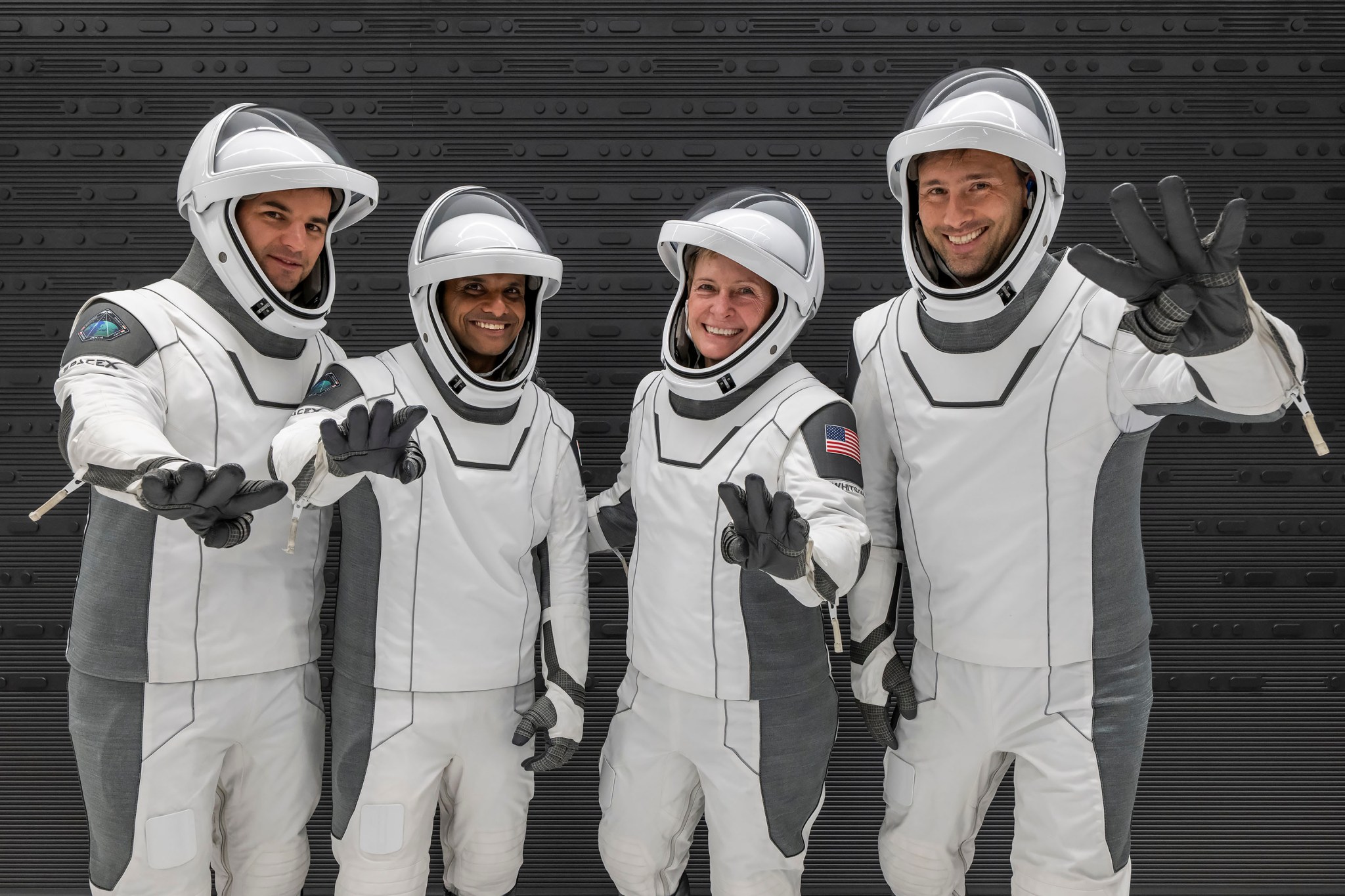
The NASA-supported fourth private astronaut mission to the International Space Station, Axiom Mission 4, completed its flight as part of the agency’s efforts to demonstrate demand and build operational knowledge for future commercial space stations.
The four-person crew safely returned to Earth, splashing down off the coast of California at 5:31 a.m. EDT on Tuesday, aboard a SpaceX Dragon spacecraft. Teams aboard SpaceX recovery vessels retrieved the spacecraft and astronauts.
Peggy Whitson, former NASA astronaut and director of human spaceflight at Axiom Space, ISRO (Indian Space Research Organization) astronaut Shubhanshu Shukla, and ESA (European Space Agency) project astronaut Sławosz Uznański-Wiśniewski of Poland, and Hungarian to Orbit (HUNOR) astronaut Tibor Kapu of Hungary, completed about two and a half weeks in space.
The Axiom Mission 4 crew launched at 2:31 a.m. on June 25, on a Falcon 9 rocket from NASA’s Kennedy Space Center in Florida. Approximately 28 hours later, Dragon docked to the space-facing port of the space station’s Harmony module. The astronauts undocked at 7:15 a.m. on July 14, to begin the trip home.
The crew conducted microgravity research, educational outreach, and commercial activities. The spacecraft will return to Florida for inspection and processing at SpaceX’s refurbishing facilities. Throughout their mission, the astronauts conducted about 60 science experiments, and returned science, including NASA cargo, back to Earth.
A collaboration between NASA and ISRO allowed Axiom Mission 4 to deliver on a commitment highlighted by President Trump and Indian Prime Minister Narendra Modi to send the first ISRO astronaut to the station. The space agencies participated in five joint science investigations and two in-orbit science, technology, engineering, and mathematics demonstrations. NASA and ISRO have a long-standing relationship built on a shared vision to advance scientific knowledge and expand space collaboration.
The private mission also carried the first astronauts from Poland and Hungary to stay aboard the space station.
The International Space Station is a springboard for developing a low Earth orbit economy. NASA’s goal is to achieve a strong economy off the Earth where the agency can purchase services as one of many customers to meet its science and research objectives in microgravity. NASA’s commercial strategy for low Earth orbit provides the government with reliable and safe services at a lower cost, enabling the agency to focus on Artemis missions to the Moon in preparation for Mars while also continuing to use low Earth orbit as a training and proving ground for those deep space missions.
Learn more about NASA’s commercial space strategy at:
https://www.nasa.gov/commercial-space
News Media Contacts:
Claire O’Shea
Headquarters, Washington
202-358-1100
claire.a.o’shea@nasa.gov
Anna Schneider
Johnson Space Center, Houston
281-483-5111
anna.c.schneider@nasa.gov